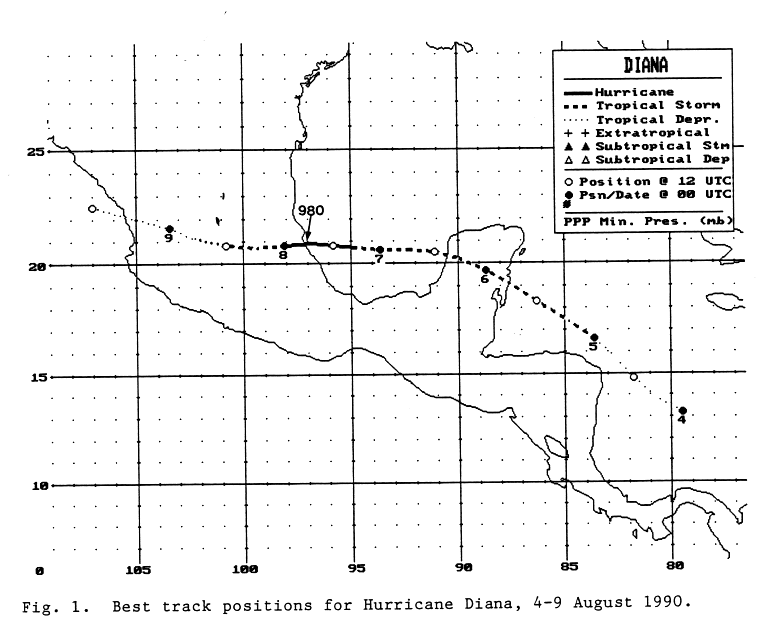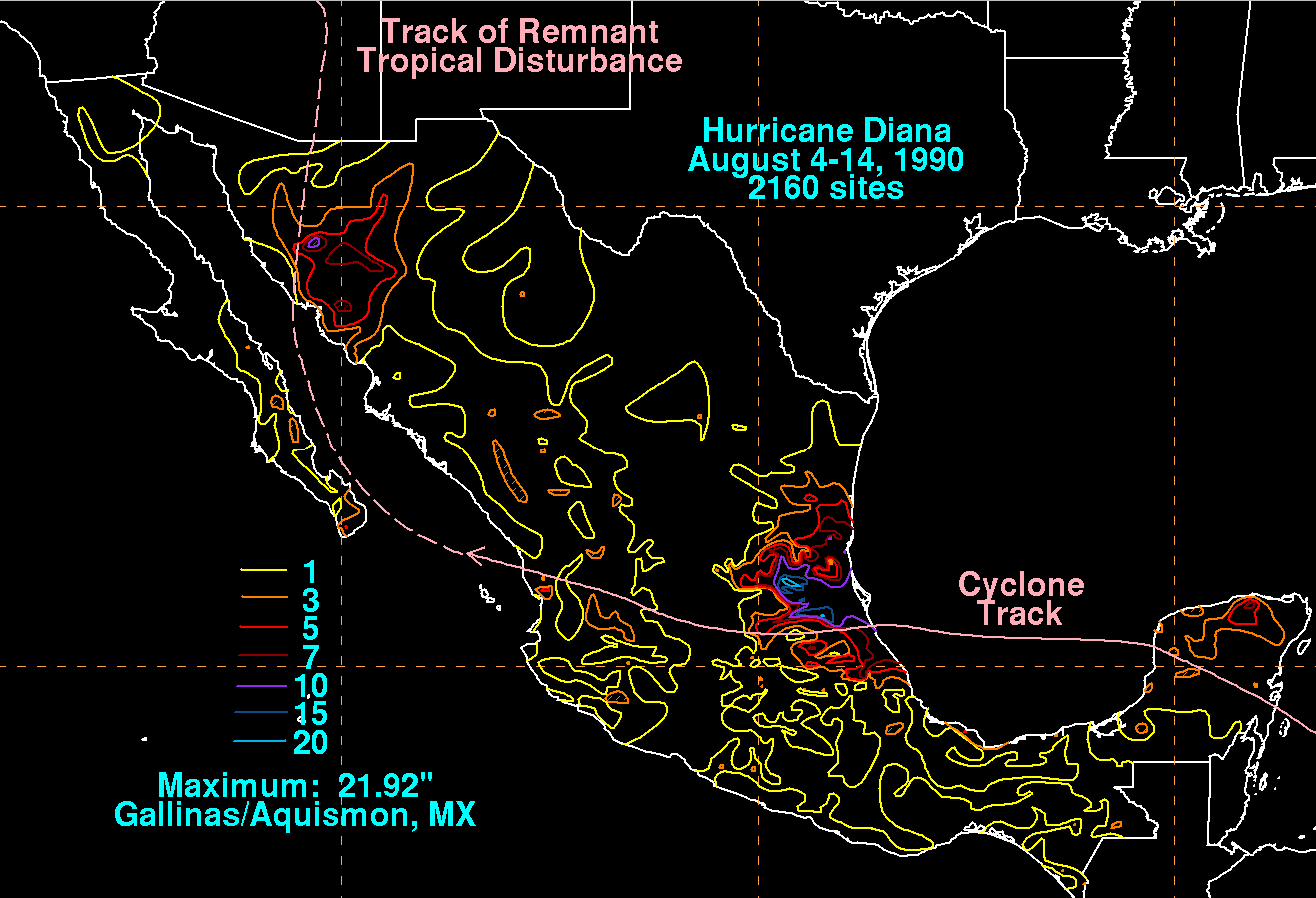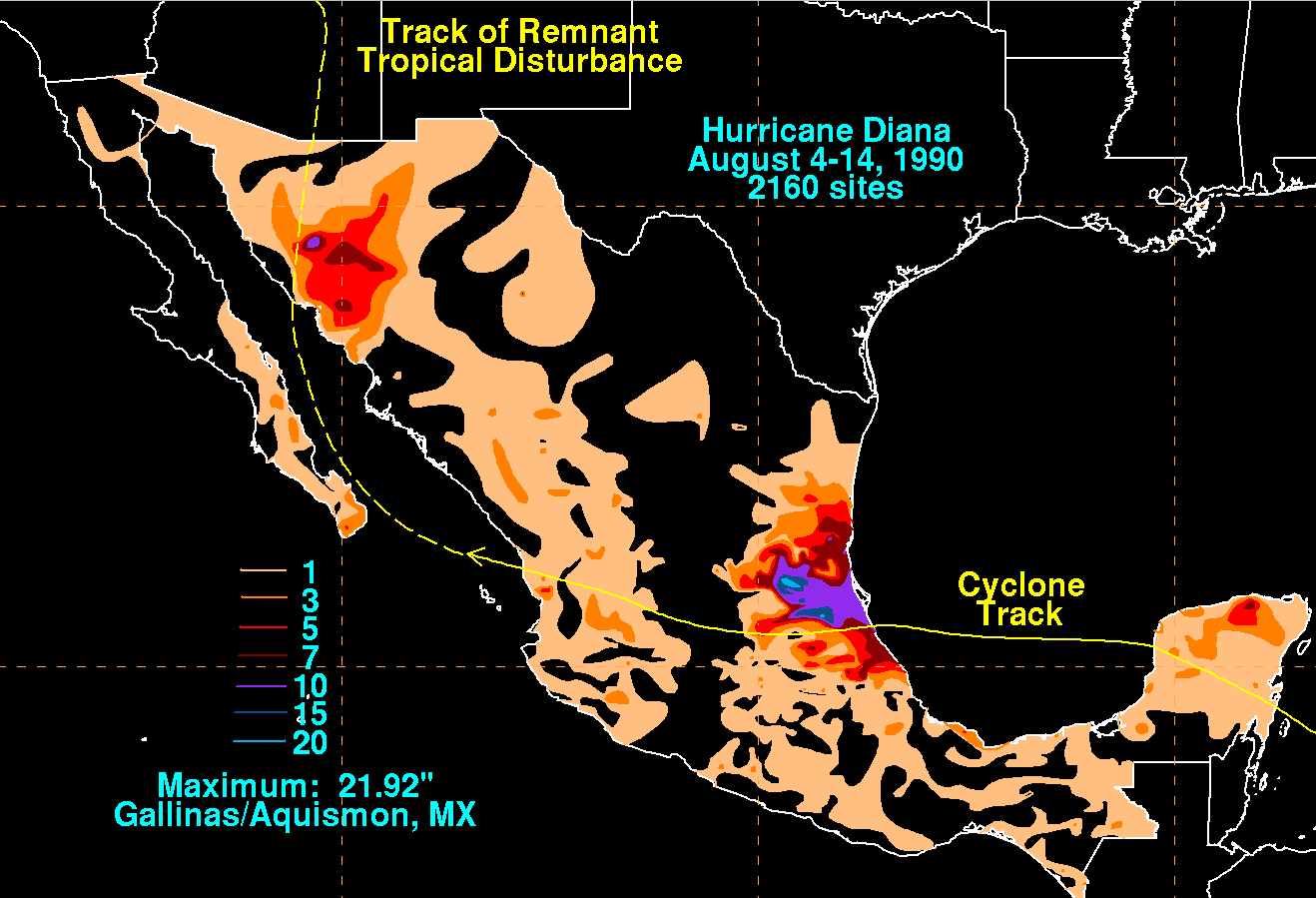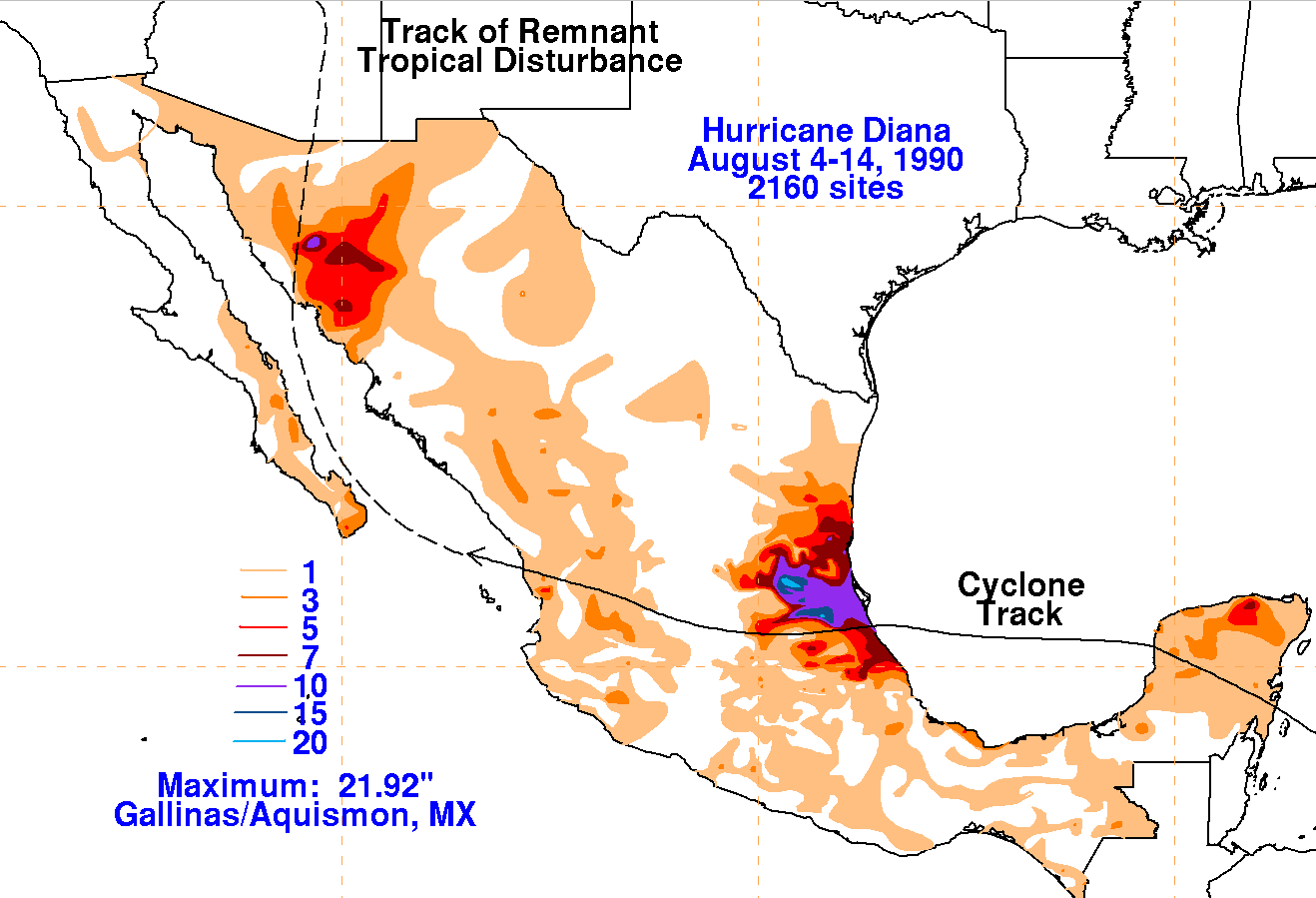A tropical wave moved off the coast of Africa on July 27. Moving across the tropical Atlantic without significant
development, it moved into the Caribbean Sea where the cloud pattern became better organized as it moved across
the Netherland Antilles. As it moved near Honduras on August 4th, it developed into a tropical depression.
Becoming a tropical storm as it moved northwest, Diana moved through the Yucatan peninsula on a more westerly
track as the upper level trough to its west weakened and it became increasingly steered by the subtropical ridge.
Intensifying into a category 2 hurricane, Diana struck Tuxpan on the morning of the 8th. Weakening as it moved
across Mexico, its surface circulation survived the trek across Mexico, emerging into the eastern Pacific ocean
after taking 96 lives due to the resultant flooding in Hidalgo and northern Vera Cruz. The resultant eastern
Pacific tropical disturbance swung northward on the east side of an upper cyclone, and significantly flared up
upon landfall in northwest Mexico, losing its identity in Arizona by the morning of the 14th. Below is its track,
supplied by the National Hurricane Center.

The graphics below show the storm total rainfall for Diana, which used information from the Comision Nacional del
Agua, parent agency of Mexico's National Weather Service. Its maximum rainfall was mainly to the right of its track.
 |
 |
 |